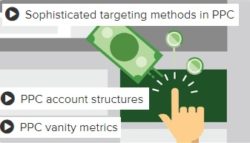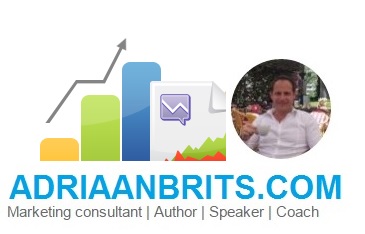Linkedin released the latest pay per click course called “Introduction to PPC with Google AdWords and Bing Ads”.
This course is popular with marketing agencies as well as entrepreneurs and CMO’s worldwide. It is taught by Adriaan Brits who is a marketing campaign specialist, managing large budgets across multiple platforms. A few things you might like about it:
Focussed on the needs of the advertisers and business owner:
So many courses are offered by the vendors today. It is in fact crucial to learn how to save on PPC by taking neutral advise on the topic, from an agency that is focussed on putting advertising dollars to work. For example, Adriaan Brits will show you how to go beyond standard Google recommendations for campaign optimizations – and how to get refunds for ad fraud or invalid clicks.
Perfect for beginners:
You need no prior experience with either PPC or copywriting – since all the basics will be covered. No doubt some very experienced folks will take the course too in order to update their skillset, but really, it is suitable for all levels.
Just over 2 hours in duration:
It is possible to complete the course in 2 hours. Naturally, you’d like to repeat some of the video modules because the advise shared is priceless – and goes a long way to ensure better ROI in digital marketing.
Topics included:
Understanding the difference between search and display advertising
Mapping PPC marketing to the sales funnel
Using marketing agencies and campaign specialists
Creating a Bing Ads account
Creating a Google AdWords account
Granting access to third-party users
Setting up a campaign in Bing Ads and Google AdWords
Setting keyword match types
Copywriting for PPC ads
Improving the quality score of your ads across different networks
Using goals and conversion tracking
Handling typical problems in PPC
Watch a sample course video now:
Here is brief sample of the discussion in one of the lessons:
Knowing key differences in the characteristics of search and display traffic will guide you to make better media buying decisions and to allocate an appropriate cost per click. Let’s explore this in depth:
With search traffic, the user would typically search for a keyword or phrase and then our ad is triggered. In e-commerce, the proven theory is that search users have already progressed quite far down the conversion funnel and they have a specific need for which they are actively searching, hence they are more likely to convert than display users.
With display traffic, a user may be reading about a product or service by chance, or they may be evaluating their options by conducting research. Only in the case where we use remarketing to display ads to users who already landed on our site through a specific search, can we assume that the user progressed further down the conversion funnel.
It is also common to see much higher bounce rates resulting from display traffic than for search, which by definition, makes search traffic much more valuable.
All of this is important to consider when placing your bids per click. Clickstream data and industry statistics confirm that conversions through search traffic is much higher than conversions through display traffic. For some products, it is normal to see conversion rates of 2% from search traffic which will justify a bid of $10 per click, and 0.25% from display traffic which will justify a bid of around $2.50 per click.
The conclusion is that we tend to allocate a much higher cost per click when we bid on search traffic than for display traffic. When you work with Google, be sure to differentiate the bids for search and display because the default user-experience on Google can easily bring you to a point where you’ve set up a campaign with no differentiation between the two traffic types.
If you’re just starting out, you may ask: “Well why do we even need display traffic?” Reasons display traffic is a valuable part of our marketing mix are:
- It can help us to increase our market share in tight markets. For example if only 1000 people per day search for your service, you may reach another 20000 people per day who read an industry blog that relates to your service.
- It can help us to launch new products that people are not yet searching for: For example, if SpaceX wants to promote holidays to space, but nobody is searching for it on Bing and Google yet, it can launch this by displaying ads on adventure travel websites or extreme experience blogs.
- With revolutionary display solutions like Linkedin Marketing solutions, we can display ads to people based on targeting criteria that was never available before, for example the persons’ job role, qualifications and company size.
As you can see, both search and display is a vital part of the marketing mix. You may be in an industry where there are sufficient search traffic, or you may operate in a tight space where your unique ability to leverage display ads in a creative way, will set you apart from the competition.

